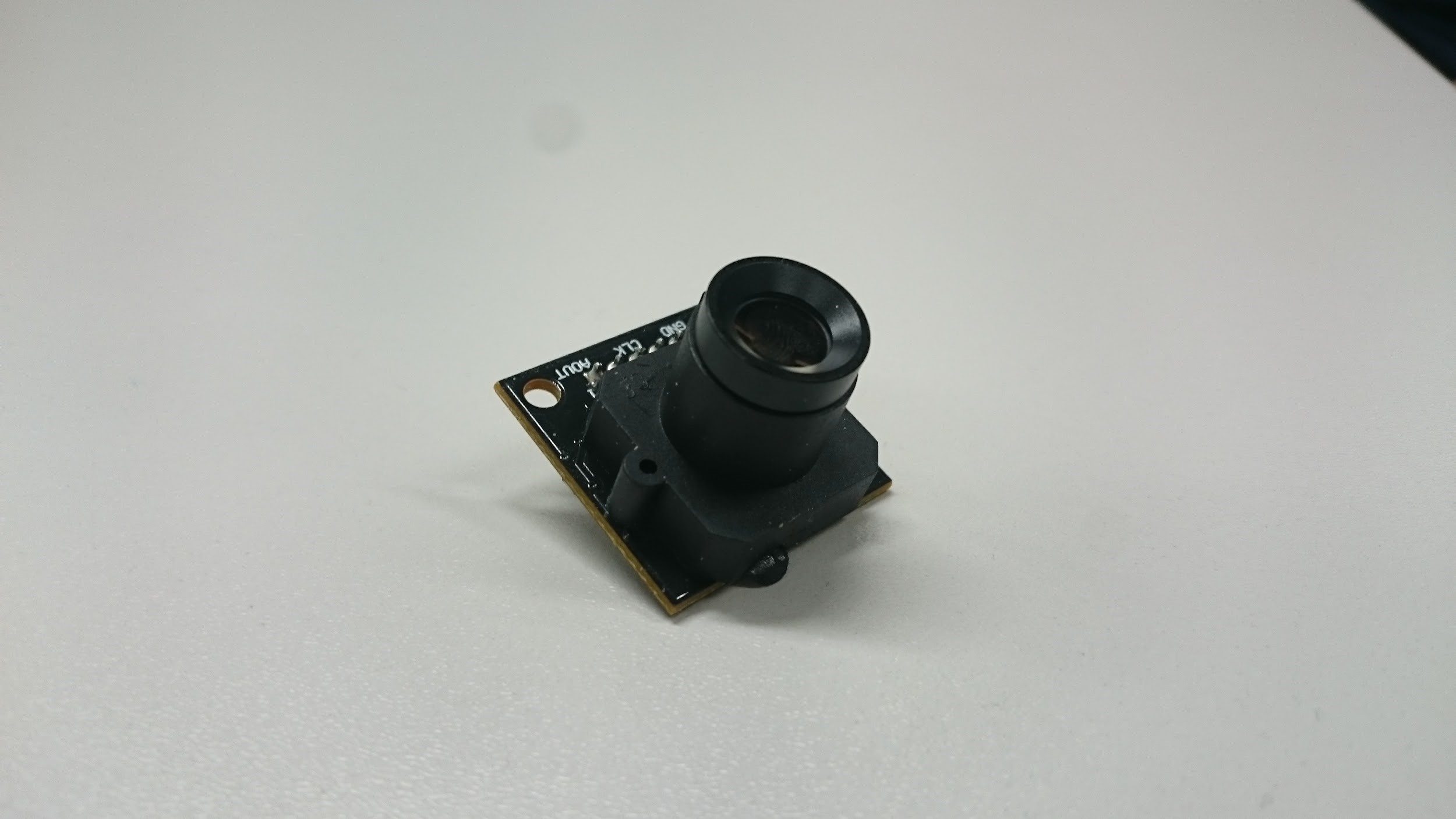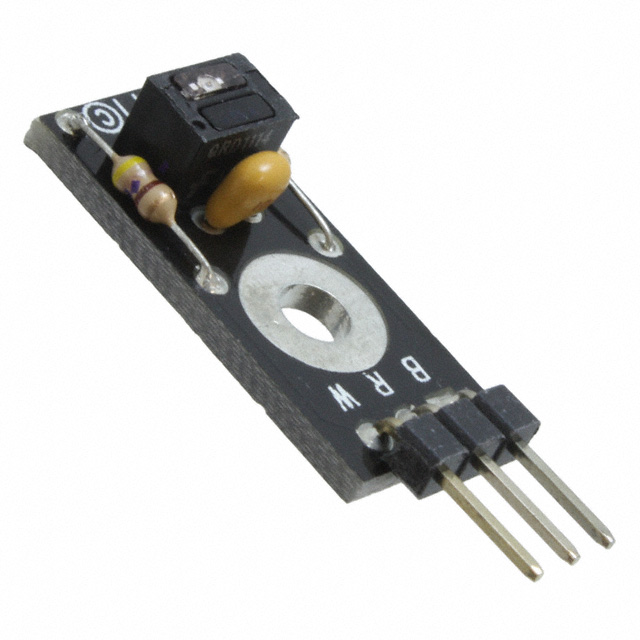Key Accomplishments
Linear Sensor Array

Photo of the linear sensor array.
The linear sensor array (line camera) is currently working with our Arduino microcontroller. The line camera is reading Data into the Arduino at a rate of 331.6 Hz.
The Tracking System is currently working, and turning the servos as the line moves in front of the camera. The exact time delay between the camera seeing the line move and the servos turning is still being calculated, but is expected to be less than 10 msec from our preliminary tests.
Wheels

Photo taken from NXP's Chassis Build Directions PowerPoint for the Freescale Cup Car found here.
The wheels have been chosen. We have decided to use the wheels off an existing model car (Freescale Cup Car). These wheels were used to determine a rough figure for the coefficient of static friction. This was done by placing the car on a piece of the official track, and then tilting the the track until the car started to slide. This angle was measured when the car started to slide. The tangent of this angle is equal to the coefficient of static friction. The angle was determined over multiple attempts to be 29 degrees.
tan(29(deg)) = 0.55
This value is quite large and is more than capable of what we need. For this reason the Freescale Cup Car wheels have been chosen to be used in our final design.
QTI Sensors

A single QTI sensor.
The QTI sensors are currently working to detect the finish line. We are using an array of 4 of these sensors to detect the finish line. The methodology here is simple, if all four sensors read as being "dark" simultaneously, the car will slow down and stop.
Because we will be starting the race with our front bumper behind the black line, we will make the QTI sensors wait for a trigger condition before they actually "look" for the finish line. This will be done in one of two ways that will depend on time and success of implementation. The simple way of doing this would be to simply implement a wait in the finish line check to ensure our car had gone past the finish line the first time. Alternatively, we would use the linear sensor array to detect the line first, which would tell the QTI sensors to start looking for the finish. This could potentially save on some processing since the code would only check the end condition at the very end of the race.
